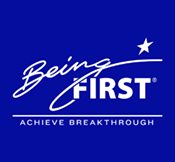Research shows that over 60% of transformational change initiatives fail. Not adequately addressing culture change is one of the primary reasons why. Transformational change often fails because leaders under-attend to their organization’s culture or are not successful in shifting their old culture. Either of these can prevent the desired state from taking hold.
Adoption of a change initiative can be blocked by staunch cultural norms. If leaders see change as strictly “organizational,” and ignore the human and cultural dimensions, it is a recipe for failure. As Jim Collins, author of “Built to Last” and “Good to Great” said, “Culture eats strategy for breakfast!” Sadly, multimillion dollar technology installations often don’t deliver their intended ROI because the people (culture) do not embrace the new ways of working that the technology demands.
Culture change is always at the foundation of successful transformation.
What Is Culture?
Organizational Culture is its collective mindset. It is the pattern of widely shared (often unconscious) assumptions, beliefs, and values that form the basis of people’s ways of being, relating and working, as well as the organization’s interaction with its environment and its success in it. Essentially, culture determines “how things are and how things get done around here.” It is largely invisible, and very powerful!
While somewhat intangible and hard to address pragmatically for most leaders, culture permeates virtually every aspect of an organization. The norms, work practices, thought patterns, values, and beliefs at play the organization have direct influence. What decisions are made and how they are made, the way structure, systems, and business processes are designed and executed, and the behavior of leaders and the workforce – all are influenced by the existing culture.
The Importance of Addressing Organizational Culture in Transformational Change
In transformation, the new strategies, structures, systems, processes and/or technologies that are being designed and implemented are typically so different from the current state that they require people to adopt new ways of being, working, and relating to perform effectively.
Without these new ways, the new state does not come to life and deliver the performance edge for which it was designed. Because most leaders are not knowledgeable or comfortable with addressing culture, many delegate it to Human Resources or to their change management practitioners. This is not an adequate way to deal with the power of culture.
To shift culture, leaders must understand its influence on their desired outcomes, want to change it, commit to change it and themselves, and fully participate to make it happen. A key strategy for changing culture is for the leaders to become models of the new norms and practices, and make them obvious to the organization.
How Do You Determine What Has to Change?
To determine what about the culture has to change, the leaders of change initiatives must first agree to address culture in their scope of change. Then, the organizational change solution must be designed with the cultural requirements needed to deliver its outcomes. That means assessing what about the existing culture already supports the new state design, what blocks it, and what must be started anew for the solution to happen and be sustained.
This is work that the change plan and timeline must account for. And, it needs to be monitored and supported throughout the life of the change process. Remember, employee engagement is key for your strategy to succeed.
Leaders Must Be Models of the Changes in Culture
You cannot change culture by announcement, or by hanging posters with cute phrases on them around the office. Leaders must go through whatever personal changes the new culture requires and demonstrate their seriousness (and leadership!) to the organization. They must become the models of the new cultural norms and mindsets. This gives them essential credibility for making the transformational change a reality!



